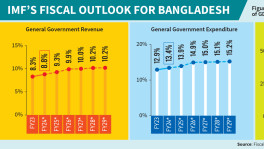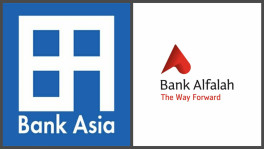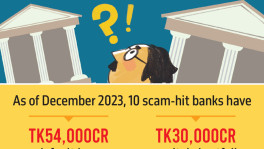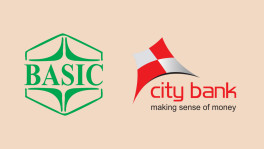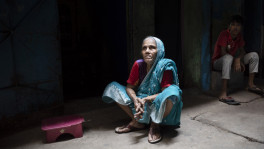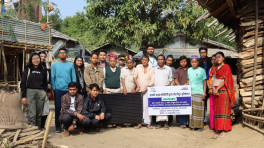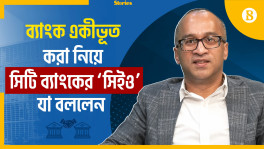Cooling down lethal living

As the forces of destruction of climate change due to global warming accelerate, Dhaka has been identified as an Urban Heat Island (UHI), a metropolitan area significantly warmer than its surrounding. With 2-3 degree celsius warmer than the surrounding rural areas, Dhaka, an UHI is home to some of the country's largest slums. During summer, the slums themselves become an UHI. Having nearly 30% (Sciencedirect, 2014) of the populace dwelling in slums, the structural quality of the slum housing in Dhaka is alarmingly low and dense. Poor and feeble housing structure - houses with a volume of 14 square metres or less, unplanned and highly dense housing conditions are only some of the plights that can make these slums makeshift burning dungeons for their dwellers. More importantly, there is an adverse effect of rising temperatures and humidity on human health.
Prolonged exposure to high temperatures can cause heat-related illnesses, including vomiting, fainting, skin rash, muscle cramps, heat cramps, heat syncope, heat exhaustion, heatstroke, and death. Again, most of the slum dwellers are migrants from different parts of the country settling in these crammed up spaces of the capital for a shot at a better life. Studies show that Dhaka witnesses an influx of up to 400,000 low-income people (National Geographic, 2019) who are driven to the city each year due to climate change alone, leaving out the myriads of other pretexts. However, almost all of them live under the poverty line and cannot afford even the basic comforts of living, such as, a cooling mechanism for their homes, something that is an absolute necessity considering their living arrangements. Under these circumstances, innovations, such as, "cool roofs" are proven to go a long way.
'Cool to be Cool' is a part of the 'Million Cool Roofs' challenge, a competition by Nesta challenges, where Nesta is a charity based in the UK. This challenge found an innovative way to decrease the temperature of buildings/houses by deploying solar-reflective roofs or in simpler words, painting roofs with materials that stop the absorption of sunlight - cool roofs, consequently, reducing heat stress. Center of Excellence for Science of Implementation and Scale-up (SISU) at BRAC James P Grant School of Public Health (BRAC JPGSPH) partnering up with the Architecture department of BRAC University were selected to take on this challenge.
The center focused on indoor thermal comfort of slums for the pressing reasons stated above in this article. With that view, Korail slum was chosen as the site of the project. To ensure thermal comfort, tin sheds of the households are coated with an off-white colored paint. This special paint has a 0.88 solar reflectance and 0.90 thermal emittance and is manufactured by Millennium Solution, USA approved by Cool Roof Rating Council (CRRC). After selecting the particular houses by certain inclusion and exclusion criteria, the color coating is applied on the tin roof. At first, the tin roof is cleaned then MS thermashield-primer is applied that holds the paint better. As the primer dries off, finally, MS thermashield cool paint is applied.
With extensive community engagement that ultimately contributed a great deal into paving the way towards success for the project, 'Cool to be Cool' kick started in December 2019. However, the lockdown due to COVID-19 set it back 6 months. A lot of the work, especially building a solid ground of community engagement went down the gutter. The project finally hit the rail again in October 2020. A month or two after rolling out for the second time, a strange rumor began to spread amongst the participants. They suspected and that the paint was a corroding substance that will ruin their roofs i.e. destroying their houses. They thought 'Cool to be Cool' was really an evil strategy to evict them. Thankfully with the help of BRAC Urban Development Programme (UDP) and the local community leaders stepping in to become the guarantors, the community was finally reassured.
SISU believes in the 'science of using science', consequently, one of the core objectives behind SISUs interventions is to disseminate the knowledge gathered from the studies so as to facilitate effective policy making. Bearing in mind that policy decisions do not always take into account research outcomes, the centre will advocate for change regarding health, economic and environmental concerns due to excessive heat, which undoubtedly is of critical national and global importance. On that account, the project will be followed by production of knowledge translation materials such as participatory videos, photo narrative and dissemination sessions.
Cool roofs are one of the most effective and easiest solutions to increase the thermal comfort of buildings and reduce cooling costs in hot climate countries with high solar radiation and outdoor temperatures. Installing cool roofs on buildings is a way to rapidly and sustainably reduce the heat island effect in cities. In accordance with CRRC, this paint will reflect the solar heat reducing the indoor temperature, as a result, it will make the houses more comfortable than a non-intervention house, and work as a positive spillover, meaning, the treatment area will become more comfortable for the beneficiaries than the control area. From primary inspection, it has come to the center's knowledge that the indoor temperature of the painted houses has dropped significantly to 3-5 degree celsius. With the primary results demonstrating success, SISU, BRAC JPGSPH hopes to become the pioneer of this novel intervention to reduce the adverse effects of UHIs and set an example for policy makers and implementers to follow through.
Mahima Rahman Srishty is a Communication Assistant for the Centre of Excellence for Science of Implementation and Scale-up (CoE-SISU) at BRAC James P Grant School of Public Health.


 Keep updated, follow The Business Standard's Google news channel
Keep updated, follow The Business Standard's Google news channel
